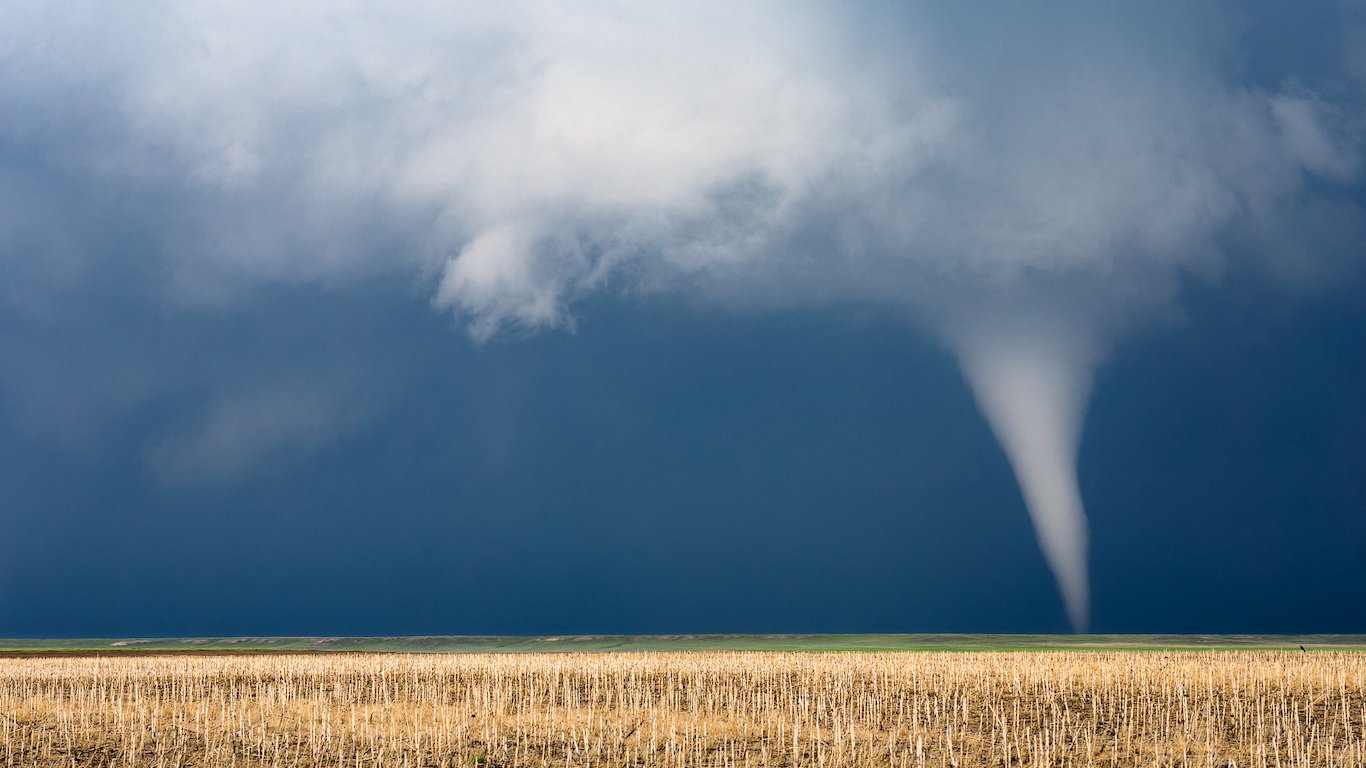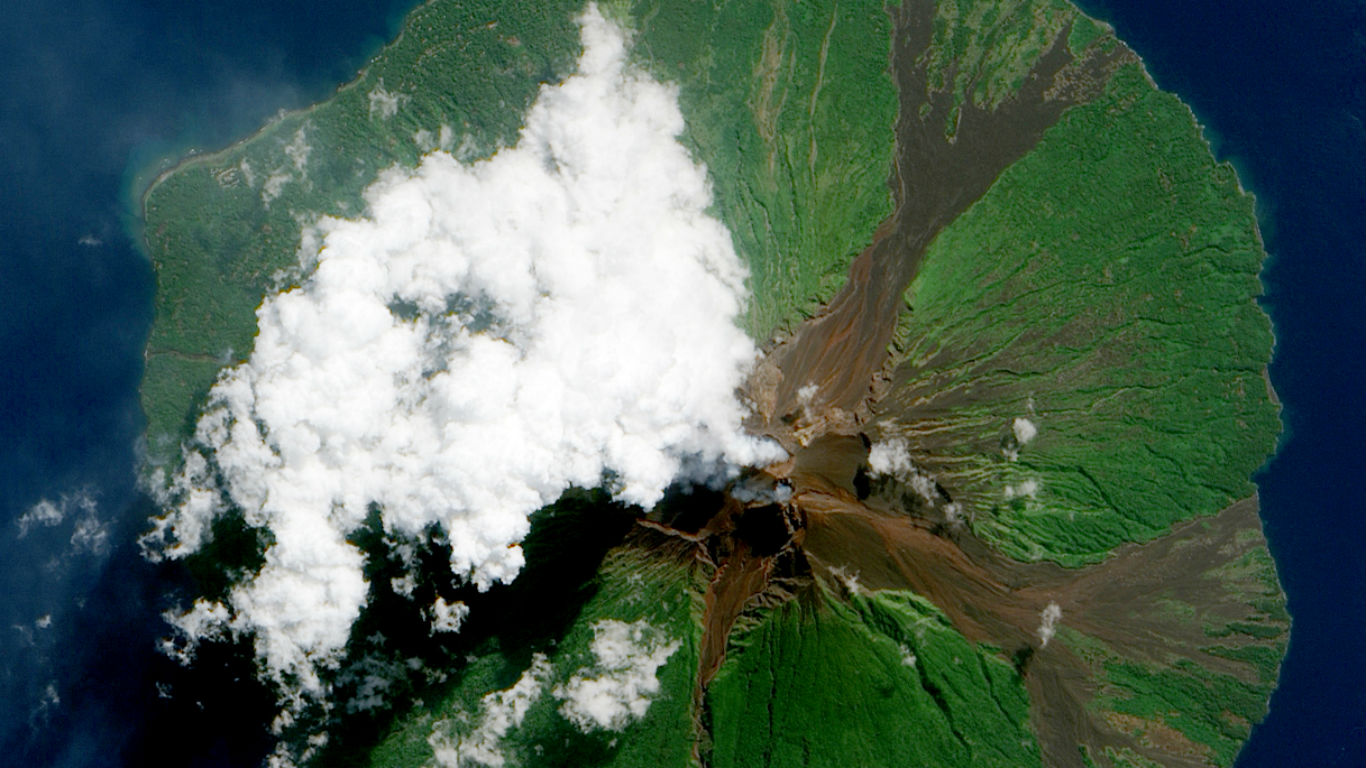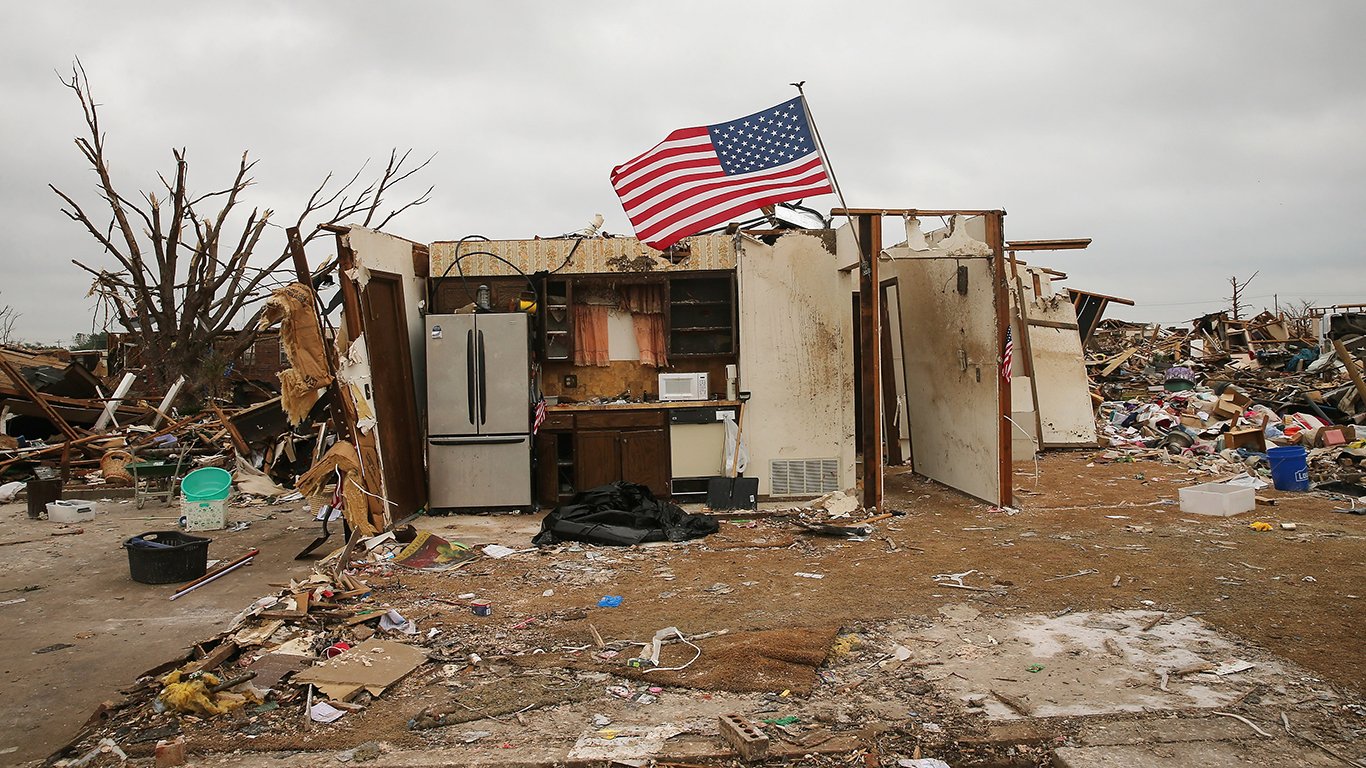

By now, most people seem aware that global warming is happening and that human emissions are largely to blame for climate change, including the more frequent and extreme weather events. One recent study looked at a specific aspect of global warming – record-breaking heat waves. The study found that nearly 460 million people could be particularly vulnerable to these heat waves, largely because they have experienced far fewer such events.
“Regions which have, so far, not experienced a particularly extreme event may be less prepared for the consequences of such an event,” wrote U.K. climate scientists in the “The most at-risk regions in the world for high-impact heatwaves” article published in Nature Communication in April. The study found that 31% of the regions from 1959 to 2021 had experienced extreme high temperatures that defied current statistical weather models.
One of these areas was the U.S. Pacific Northwest and Canada in the summer of 2021, when temperatures shot past 100 degrees Fahrenheit in Oregon and Washington, while in British Columbia a heat wave sent temperatures to a broiling 121 degrees, the highest ever registered in Canada. (See, this city emits the most carbon dioxide in the world.)
But while many places in the world have experienced similar statistically improbable spikes in temperature, other regions have yet to shatter their long-standing records. Some of these regions have maximum temperature records that have not been broken in the lifetimes of most people living in them today.
To identify the most at-risk region in the world for high-impact heat waves, 24/7 Wall St. reviewed the eight regions where the current records have the lowest “return period of record event,” a measure of the likelihood a record-breaking event will occur, from the study. The analysis, by Thompson, V., Mitchell, D., Hegerl, G.C. et al, reviewed 136 regions. All temperatures mentioned are in Fahrenheit unless otherwise noted.
In these regions, a record-breaking event is not only more likely but also likely to have greater impacts due to a lack of preparedness. Countries tend to prepare for the level of the greatest event they have experienced within collective memory.
Sparsely-populated eastern Russia, for example, has a record maximum average temperature of 90 degrees F that has held for 71 years. But in June 2020, the Russian town of Verkhoyansk in the Arctic Circle recorded a 100-degree heat wave, the same month that Moscow, far to the west, shattered its 120-year record when summer temperatures reached 90 degrees.
The researchers also identified three regions that include developing countries such as Afghanistan, which is highly unprepared to protect its rapidly growing population from global warming and extreme events. Papua New Guinea and Central America – including Guatemala, El Salvador, Honduras, Nicaragua, Costa Rica, and Panama – are the other two regions for high-risk heat waves and lack of preparedness largely because of their additional social and economic struggles. (These are the worst cities to live in as climate change gets worse.)
Other regions include more developed countries, such as northwestern Australia and Central Europe that are already experiencing recent high temperatures that are approaching records that have been held for more than 90 years.
Here are the world’s most at-risk regions for extreme heat waves.

8. China, Beijing region
> Time elapsed since record heat wave: 100 years
> Current record temperature: 99.7 °F
> 1-in-100 worst-case scenario temperature: 100.0 °F
> Population, 2020: 250.3 million
> Projected population growth by 2050: 93.0%
The world’s most-populous country, for now, had to deal with widespread sweltering heat waves in 2022 in which more than 900 million of the country’s 1.41 billion people broiled under numerous heat warnings. Residents of the Beijing region – roughly the same latitude as San Francisco – are susceptible to unusual spikes in temperature. This is because of the urban heat island effect in this densely-populated region that includes the capital city, where urban temperatures are magnified by infrastructure like buildings and roads. In 2017, Beijing’s heat index – a real temperature measure that takes humidity into account – hit nearly 115 degrees F.
[in-text-ad]

7. Australia, Queensland region
> Time elapsed since record heat wave: 94 years
> Current record temperature: 111.6 °F
> 1-in-100 worst-case scenario temperature: 111.7 °F
> Population, 2020: 0.4 million
> Projected population growth by 2050: 166.0%
Researchers at Australia’s James Cook University released a study in March that found residents of the country’s northwestern Queensland state had a 5% greater risk of dying during heat waves due to their effect on the elderly, the poor, or people with certain medical conditions. But the chances of heat-related death were higher for Queenslanders living in the urban centers of Brisbane, Sunshine Coast, and Gold Coast. The paper also found that the number of cumulative heat wave days in 455 Queensland regions increased from 9,504 in 2010-11 to 31,236 in 2018-19, according to the Australian Broadcast Corporation.

6. Argentina, northwestern
> Time elapsed since record heat wave: 92 years
> Current record temperature: 92.8 °F
> 1-in-100 worst-case scenario temperature: 93.0 °F
> Population, 2020: 4.1 million
> Projected population growth by 2050: 101.0%
Weather stations in northern Argentina measured local record-setting heat waves at the end of 2022. One station near the border with Paraguay and Bolivia recorded a reading of 114.8 degrees on Dec. 7, “the hottest temperature recorded in the world that day,” according to U.K.-based news service Carbon Brief. The heat wave was unusual because it occurred after an unusually cool spring and before the peak of the austral summer, which occurs from December to February in the Southern Hemisphere.

5. Central Europe
> Time elapsed since record heat wave: 91 years
> Current record temperature: 97.9 °F
> 1-in-100 worst-case scenario temperature: 98.4 °F
> Population, 2020: 110.3 million
> Projected population growth by 2050: 115.0%
Europe sweltered under an intense heat wave last summer, with record temperatures in Britain and France. The heat dome quickly shifted eastward, delivering triple-digit temperatures to Germany before spiking temperatures in Poland and other parts of Central Europe. The region shares the same latitude as southern Canada and northern United States, where summer temperatures historically tend to be milder.
[in-text-ad-2]
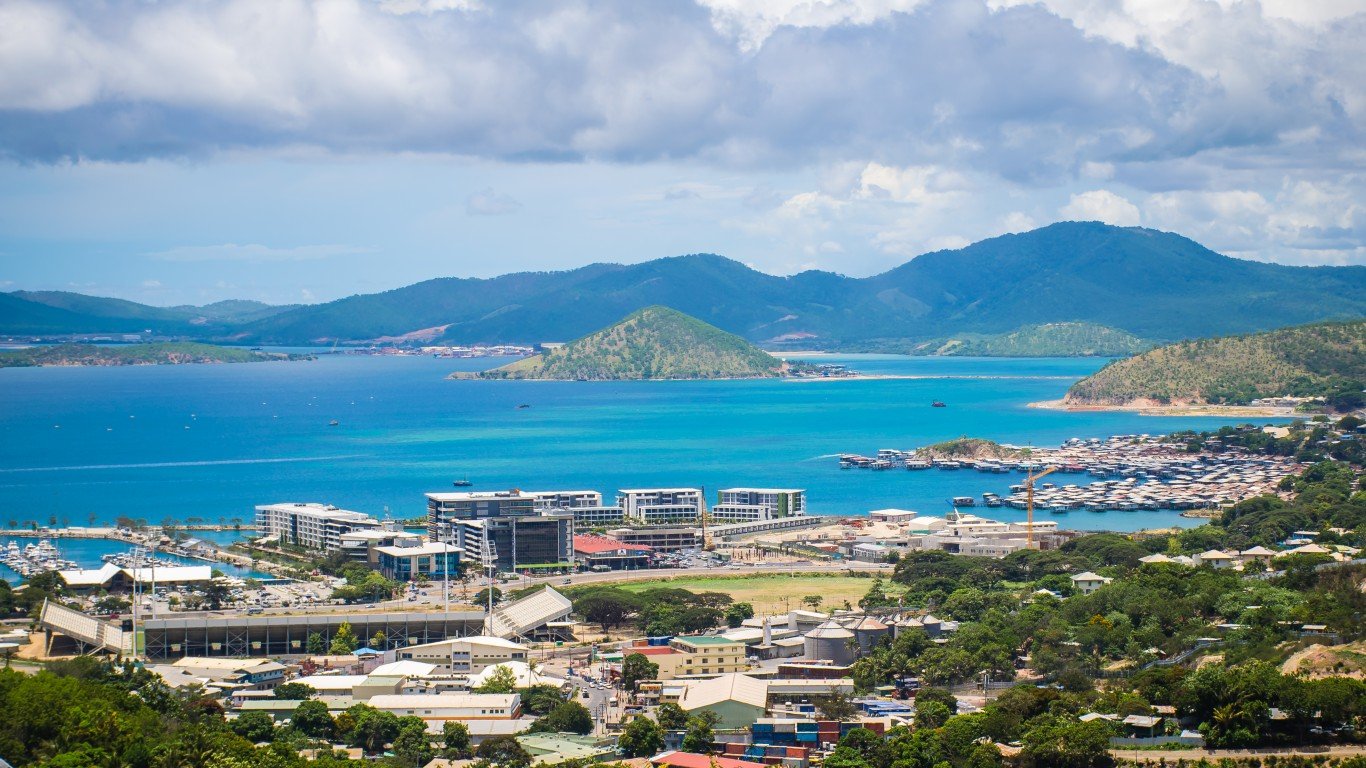
4. Papua New Guinea
> Time elapsed since record heat wave: 90 years
> Current record temperature: 90.5 °F
> 1-in-100 worst-case scenario temperature: 90.7 °F
> Population, 2020: 7.5 million
> Projected population growth by 2050: 126.0%
The threat of extreme heat in Papua New Guinea is classified as “medium” based on a model used by the World Bank-affiliated natural hazard tracker ThinkHazard. “This means that there is more than a 25% chance that at least one period of prolonged exposure to extreme heat, resulting in heat stress, will occur in the next five years,” in this Oceanic country located north of eastern Australia. The developing country, however, where a large portion of the population rely on subsistence farming, lacks many of the resources available to more affluent countries to prepare for extreme heat wave events.
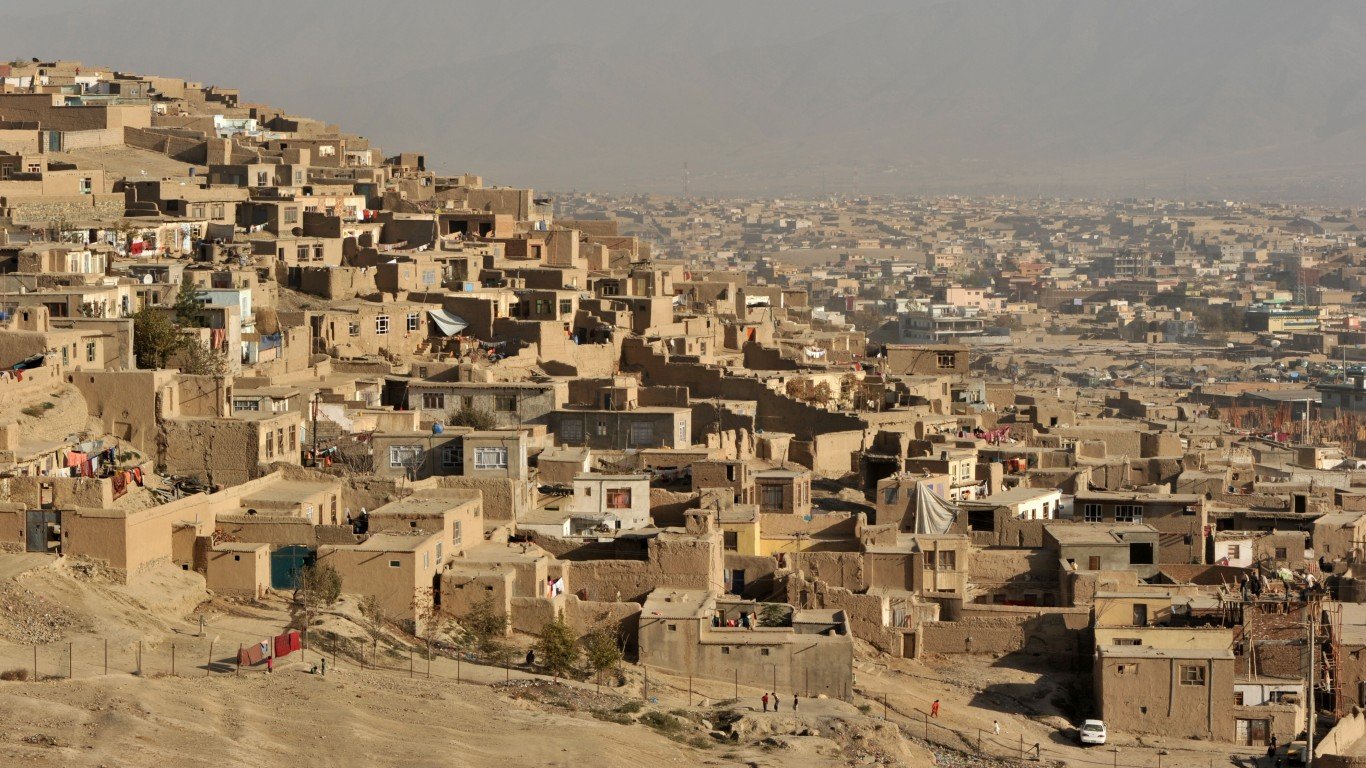
3. Afghanistan
> Time elapsed since record heat wave: 84 years
> Current record temperature: 100.0 °F
> 1-in-100 worst-case scenario temperature: 100.2 °F
> Population, 2020: 38.8 million
> Projected population growth by 2050: 146.0%
Afghanistan is ill prepared for the unprecedented heat that will strike its growing and impoverished population. The researchers of the study on the most at-risk regions in the world for intense heat waves identify Afghanistan as the “region of most concern” because of its lack of resources, steep population growth, and the likelihood of “far more extreme heat waves.” Twenty-six of the country’s 34 provinces are classified as having a “medium” or “high” likelihood of experiencing extreme heat resulting in heat stress within the next five years, according to World Bank-affiliated natural hazard tracker ThinkHazard.
[in-text-ad]
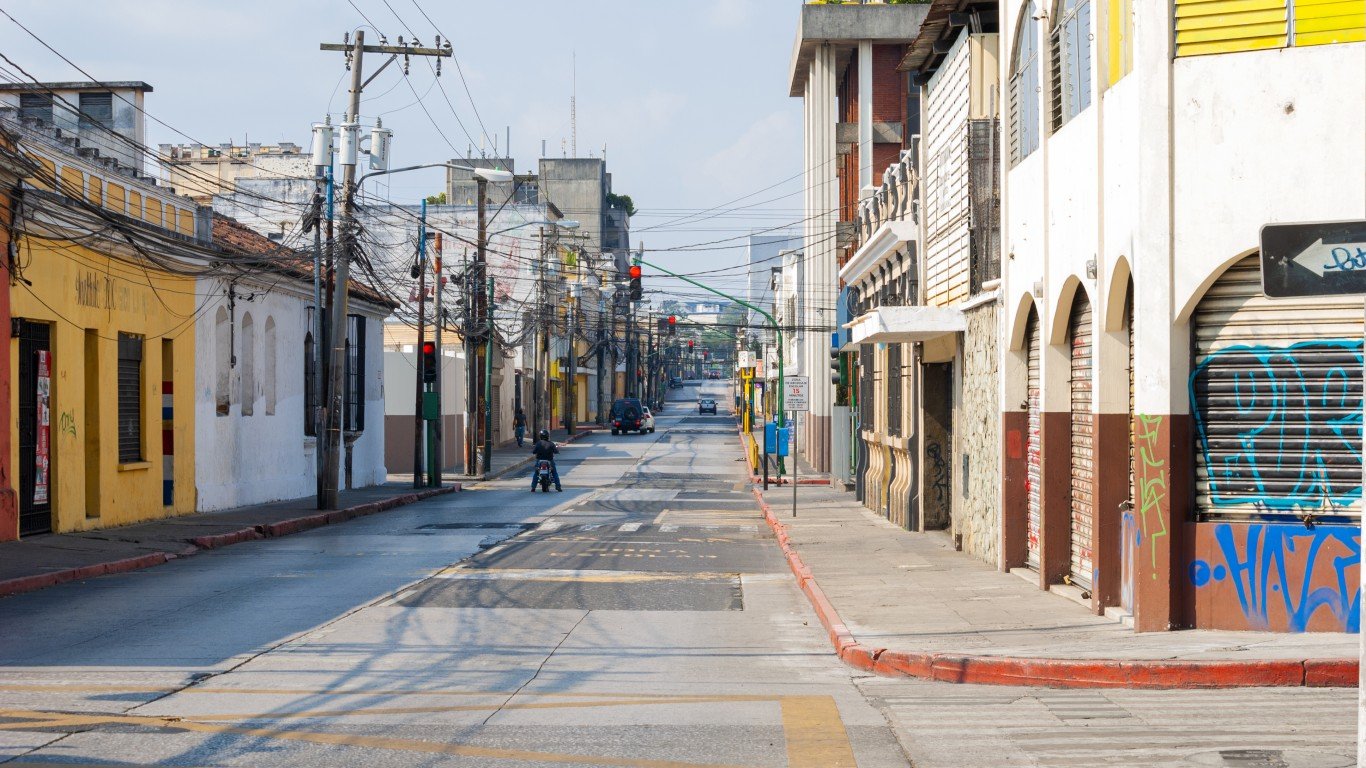
2. Central America
> Time elapsed since record heat wave: 78 years
> Current record temperature: 97.2 °F
> 1-in-100 worst-case scenario temperature: 97.9 °F
> Population, 2020: 45.5 million
> Projected population growth by 2050: 105.0%
Temperatures in many parts of the seven countries between Mexico and Colombia hit 104 degrees in April 2017. Extreme heat in recent years has ravaged farmland and exacerbated food insecurity in this largely agrarian region. “The current record is further below the statistical maximum — suggesting the region could experience a large jump in the record,” say the authors of the study on the most at-risk regions in the world for intense heat waves. In addition, several of the countries in the region also struggle with economic and social problems that would further affect their ability to prepare for extreme heat waves.
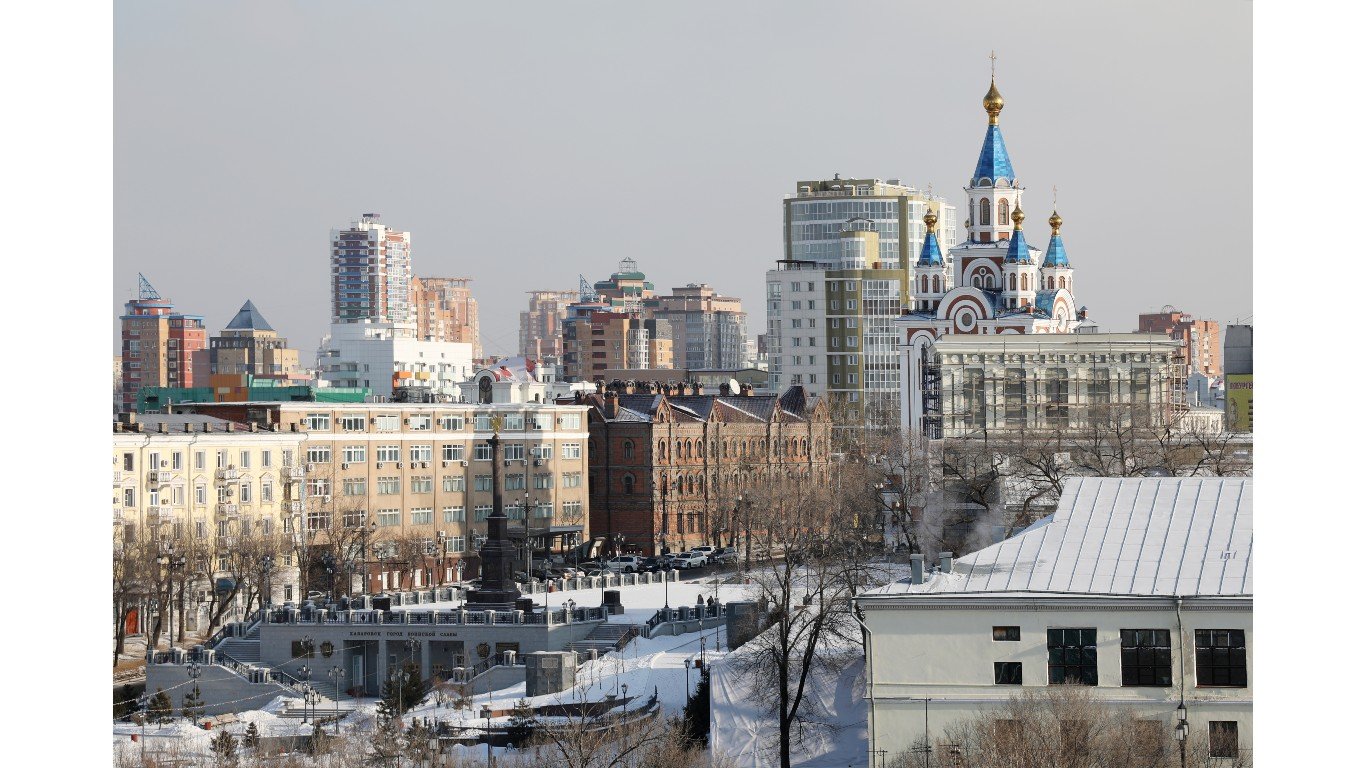
1. Russia, far eastern
> Time elapsed since record heat wave: 71 years
> Current record temperature: 90.3 °F
> 1-in-100 worst-case scenario temperature: 91.2 °F
> Population, 2020: 1.4 million
> Projected population growth by 2050: 101.0%
Temperatures in the Russian city of Verkhoyansk in the country’s far east above the Arctic Circle topped 100 degrees Fahrenheit in June 2020, the same month that Moscow, which shares the same latitude as a stretch of central Canada, experience a historic heat wave of nearly 95 degrees that broke a 120-year record. Russia’s low-population far east has been called a “methane time bomb,” due to rapidly rising temperatures that cause its limestone deposits to release methane, a particularly potent greenhouse gas.
Sponsored: Find a Qualified Financial Advisor
Finding a qualified financial advisor doesn’t have to be hard. SmartAsset’s free tool matches you with up to 3 fiduciary financial advisors in your area in 5 minutes. Each advisor has been vetted by SmartAsset and is held to a fiduciary standard to act in your best interests. If you’re ready to be matched with local advisors that can help you achieve your financial goals, get started now.
Thank you for reading! Have some feedback for us?
Contact the 24/7 Wall St. editorial team.
